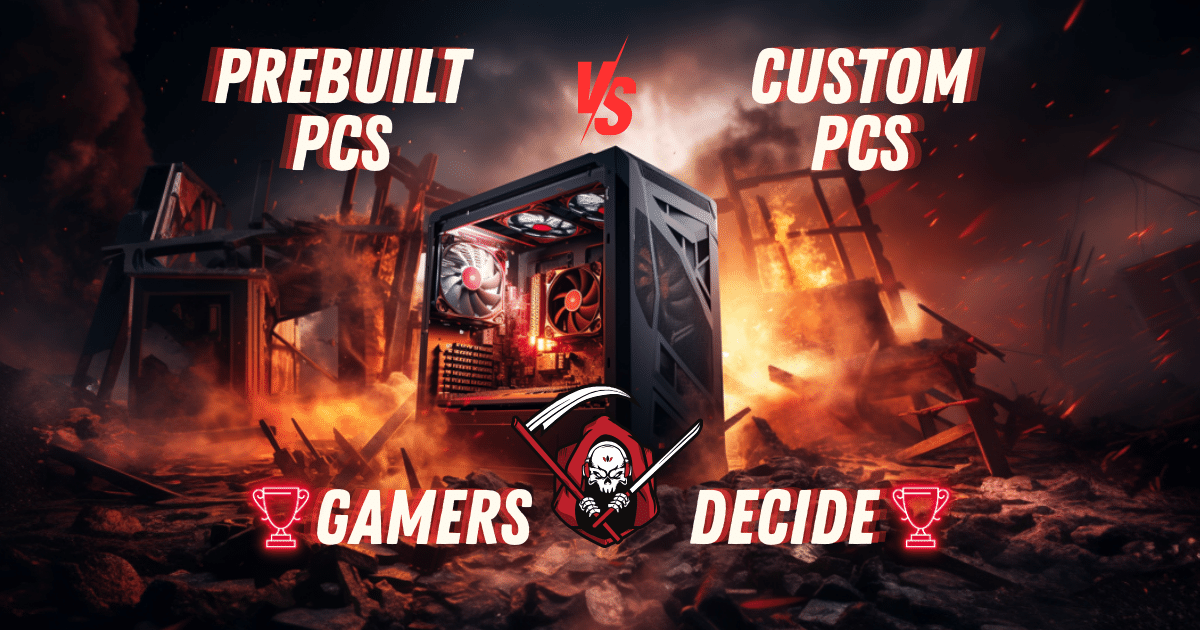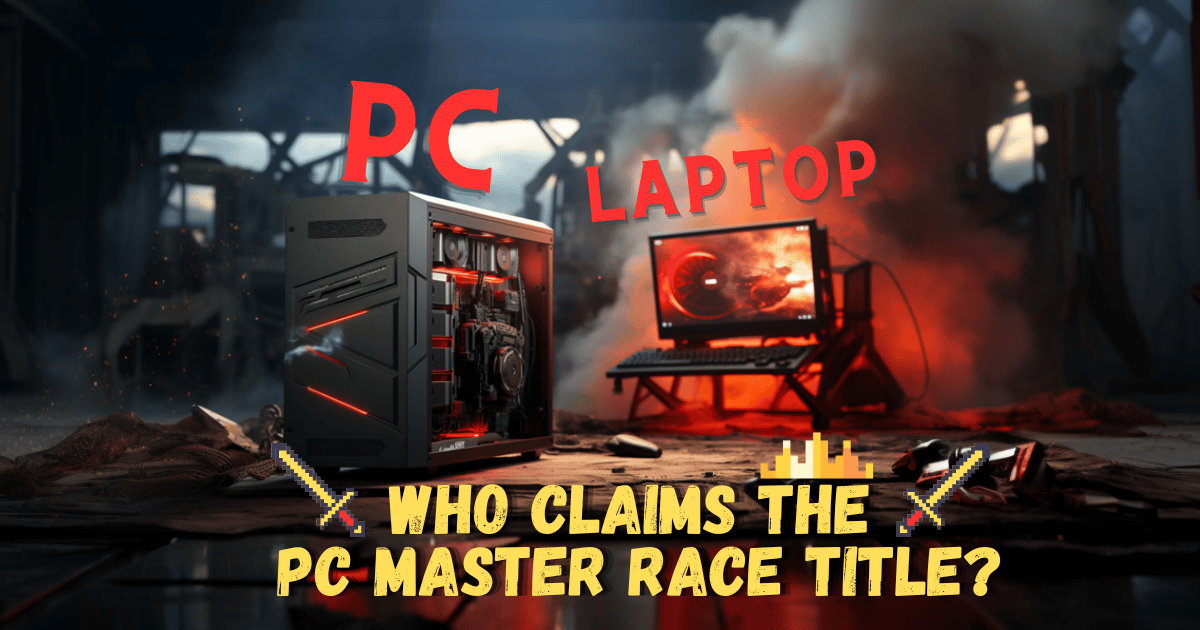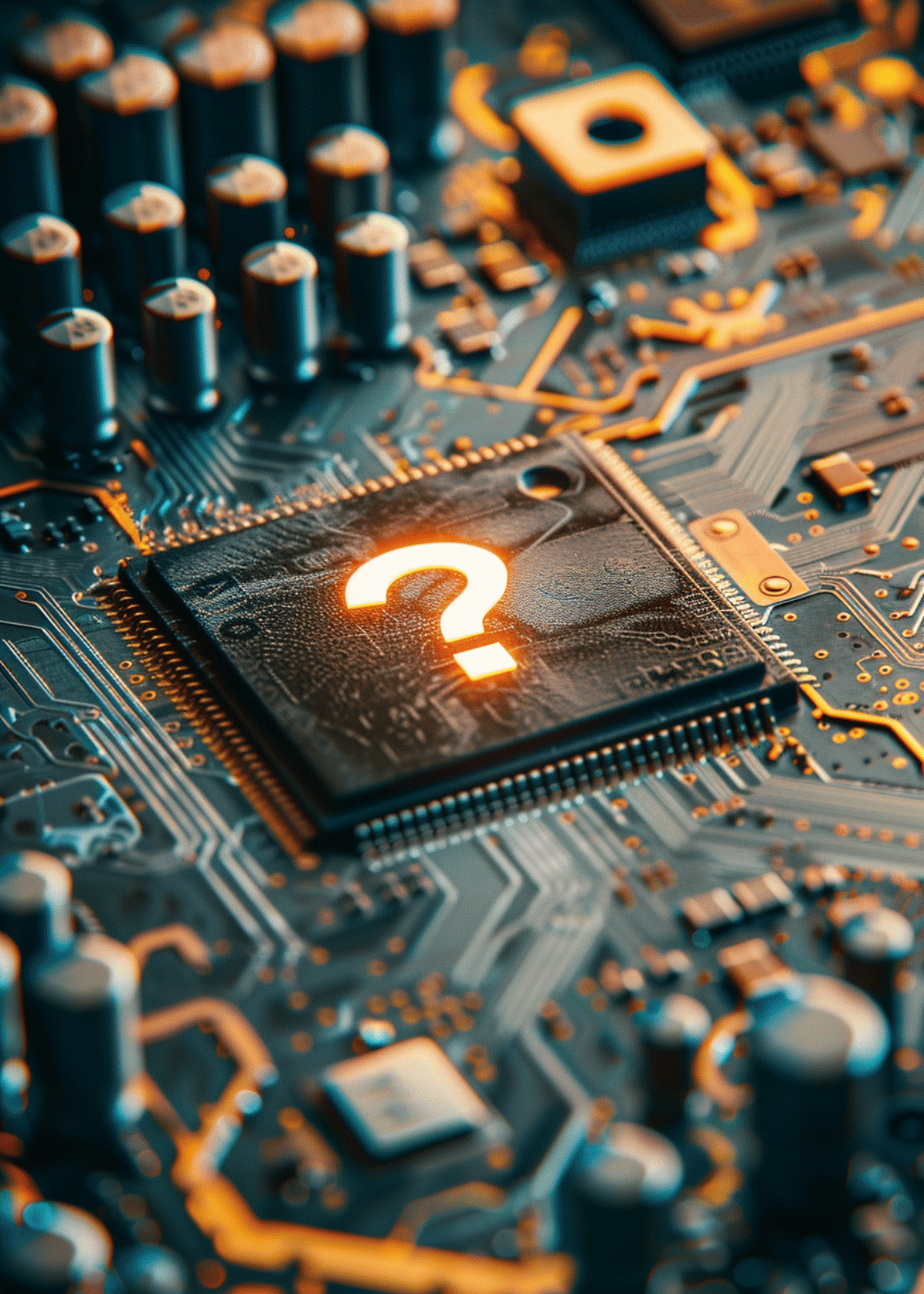Here's Exactly What to Look for When Buying a Computer to Get the Perfect One for Yourself! 👀

Choosing the right computer is crucial in today's digital age. Whether you're a student, a professional, or an avid gamer, having a computer that meets your specific needs is essential for optimal performance and productivity.
With the wide range of options available in the market, it can be overwhelming to make a decision. However, by considering specific factors before making a purchase, you can ensure that you invest in a computer that suits your requirements perfectly.
⇨ Determine Your Needs 📝⇦
To begin the process of choosing the right computer, it's important to assess your computing requirements. Consider the primary purpose for which you'll be using the computer. Are you a gamer, a professional who needs it for work, or someone who enjoys multimedia activities? Identifying your specific needs will help narrow down the options and make the decision-making process easier.
⇨ Operating System 💻⇦
An operating system (OS) is a crucial component of any computer system as it manages hardware and software resources, allowing users to interact with their devices. There are several popular operating systems available, including Windows, macOS, and Linux. Each OS has its own set of pros and cons, and choosing the right one depends on factors such as software compatibility and personal preferences.
➮ Windows OS 🥇
Windows is the most widely used operating system, known for its user-friendly interface and extensive software support.
It offers a vast range of applications and games, making it an ideal choice for gamers and general users.
However, Windows is more susceptible to malware and viruses compared to other operating systems.
➮ Mac OS 🥈
MacOS, exclusive to Apple devices, is known for its sleek design and seamless integration with other Apple products.
It offers a secure and stable environment, making it popular among creative professionals.
However, macOS has a limited software library compared to Windows, and Apple devices tend to be more expensive.
➮ Linux OS 🥉
Linux is an open-source operating system that offers flexibility and customization options.
It is highly secure and stable, making it a preferred choice for developers and tech enthusiasts.
Linux also has a vast software repository, although it may require more technical expertise to set up and use effectively.
When choosing an operating system, it is important to consider compatibility with your software requirements. If you rely on specific applications or games, ensure they are compatible with the OS you choose. Additionally, personal preferences such as user interface, customization options, and familiarity should also be taken into account.
⇨ Processor 🧠⇦
The processor, also known as the central processing unit (CPU), is a critical component that significantly impacts computer performance. It is responsible for executing instructions and performing calculations, making it essential for tasks ranging from basic web browsing to complex video editing.
There are two main processor manufacturers in the market, Intel and AMD:
➤ Intel Processor
Intel processors have long been dominant, known for their strong single-core performance and compatibility with a wide range of software.
- They are often favored by gamers and professionals who require high-performance computing.
- However, Intel processors tend to be more expensive.
The most popular Intel Processors are apart of the Intel Core i series!
➤ AMD Processor
AMD processors, on the other hand, have gained popularity in recent years due to their competitive performance and affordability.
- They offer excellent multi-core performance, making them suitable for tasks that benefit from parallel processing, such as video rendering and multitasking.
- AMD processors are a popular choice among budget-conscious users and content creators.
The most popular AMD Processors are apart of the AMD Ryzen Core series!
When considering a processor, factors such as the number of cores, clock speed, and cache size should be taken into account. More cores allow for better multitasking and improved performance in multi-threaded applications. Higher clock speeds result in faster execution of instructions, while larger cache sizes enable quicker access to frequently used data.
⇨ Memory (RAM) 💭⇦
Random Access Memory (RAM) plays a crucial role in multitasking and overall system performance. It is a temporary storage space that holds data and instructions that the processor needs to access quickly. The more RAM a computer has, the more data it can store for immediate use, reducing the need to rely on slower storage devices.
➲ Recommended Amount of RAM 🌟
The recommended amount of RAM depends on the specific use case.
For basic tasks like web browsing and document editing, 8GB of RAM is generally sufficient.
- However, for more demanding tasks such as video editing, graphic design, or gaming, 16GB or even 32GB of RAM may be recommended to ensure smooth performance.
It is also important to consider the upgradeability and expandability options for future needs. Some computers allow for easy RAM upgrades, while others may have limited or soldered RAM, making it difficult or impossible to upgrade. Therefore, it is advisable to choose a system that offers flexibility in terms of RAM upgrades.
⇣ More On Computer Memory (RAM) ⇣
↠ Click ↪ HERE ↩ to learn more about memory and how much your computer needs! ↞
-
↠ Click ↪ HERE ↩ to learn about the different types of memory ↞
-
↠ Click ↪ HERE ↩ to learn when you need to upgrade your computer's RAM ↞
⇨ Storage 📦⇦
Storage is where data is permanently stored on a computer. There are different types of storage options available, including Hard Disk Drives (HDDs), Solid-State Drives (SSDs), and NVMe (Non-Volatile Memory Express) drives.
➥ HDD Storage
HDDs are traditional storage devices that use spinning disks to store data.
They offer larger storage capacities at a lower cost per gigabyte compared to SSDs.
- However, HDDs are slower in terms of data access and transfer speeds, which can result in longer boot times and slower application loading times.
➥ SSD Storage
SSDs, on the other hand, use flash memory to store data, resulting in significantly faster data access and transfer speeds compared to HDDs.
- They are more durable, consume less power, and produce less noise.
SSDs are ideal for improving overall system responsiveness and reducing loading times for applications and files.
➥ NVMe Storage
NVMe drives are a type of SSD that utilizes the NVMe protocol, enabling even faster data transfer speeds.
They are typically more expensive than traditional SSDs but offer the highest performance for tasks that require intensive data processing, such as video editing or gaming.
When choosing storage, consider the storage capacity needed for your files, applications, and media. If you work with large files or require extensive storage, a larger capacity HDD or SSD would be suitable. However, if speed and responsiveness are a priority, investing in an SSD or NVMe drive would be beneficial.
⇣ More On Computer Storage ⇣
↠ Click ↪ HERE ↩ to see if SSDs or HDDs are better for gaming! ↞
-
↠ Click ↪ HERE ↩ to learn why SSDs are faster than HDDs! ↞
⇨ Graphics Card (GPU) 👓⇦
A dedicated graphics card, also known as a Graphics Processing Unit (GPU), is essential for tasks that require high-quality visuals, such as gaming and multimedia tasks. It offloads the processing of graphics-related tasks from the CPU, resulting in improved performance and visual fidelity.
There are two main types of GPUs, integrated and dedicated:
➜ Integrated GPU 🦴
Integrated GPUs are built into the CPU and share system memory for graphics processing.
They are suitable for basic tasks like web browsing and video playback but may struggle with demanding applications or games.
➜ Dedicated GPU 💪
Dedicated GPUs, on the other hand, have their own dedicated memory and processing power.
- They offer significantly better performance and are essential for gaming, video editing, 3D modeling, and other graphics-intensive tasks.
Dedicated GPUs come in various models and performance levels, allowing users to choose one that meets their specific needs and budget.
When considering a graphics card, it is important to check the system requirements of the applications or games you intend to use. Some applications may require a minimum GPU specification to run smoothly. Additionally, if you plan to use multiple monitors or engage in virtual reality (VR) gaming, ensure that the graphics card supports these features.
⇨ Display 📺⇦
A high-quality display is essential for visual tasks, as it directly affects the clarity, color accuracy, and overall viewing experience. When choosing a display, consider factors such as size, resolution, and panel type.
⇛ Monitor Size
The size of the display depends on personal preference and the intended use.
Larger displays provide more screen real estate, making them suitable for tasks that require multitasking or immersive experiences like gaming or video editing.
Smaller displays are more portable and may be preferred for laptops or compact setups.
⇛ Monitor Resolution
Resolution refers to the number of pixels on the screen and determines the level of detail and sharpness.
Higher resolutions, such as 4K or even 8K, offer more detailed visuals but may require more powerful hardware to drive them effectively.
Lower resolutions, such as Full HD (1080p), are still widely used and offer a good balance between performance and visual quality.
⇛ Monitor Panel Type
Panel type is another important consideration.
IPS (In-Plane Switching) panels offer wide viewing angles and accurate color reproduction, making them suitable for tasks that require color accuracy, such as graphic design or photo editing.
TN (Twisted Nematic) panels are known for their fast response times, making them ideal for gaming.
OLED (Organic Light-Emitting Diode) panels offer deep blacks and vibrant colors, providing an excellent visual experience.
⇛ Additional Monitor Features
Additional features to consider include color accuracy, refresh rate, and response time.
Color accuracy is important for tasks that require precise color representation, such as graphic design or video editing.
A higher refresh rate, measured in Hertz (Hz), results in smoother motion and reduces motion blur, making it beneficial for gaming or fast-paced video content.
- Response time refers to how quickly pixels can change from one color to another and affects the clarity of fast-moving visuals.
It is very very important to keep in mind that your display/monitor can quite literally make or break your whole computer and computing experience! If you have a great PC and then go cheap on your monitor, not only will the display look ugly, you won't even be able to see all the frames your PC is computing. Spending a little extra on your monitor will make a world's difference.
⇣ More On Computer Monitor Displays ⇣
↠ Click ↪ HERE ↩ to get started on finding the right monitor just for you! ↞
-
↠ Click ↪ HERE ↩ to find the BEST super ultra-wide gaming monitor for yourself! ↞
-
↠ Click ↪ HERE ↩ to find the BEST vertical monitor for yourself! ↞
-
↠ Click ↪ HERE ↩ to find the BEST curved gaming monitor for yourself! ↞
⇨ Connectivity and Ports 🔌⇦
Connectivity options and ports are essential for connecting peripherals and external devices to your computer. Common connectivity options include USB, HDMI, Thunderbolt, and more.
⇥ USB Port
USB ports are versatile and widely used for connecting devices such as keyboards, mice, printers, external storage, and smartphones.
It is important to consider the number and type of USB ports required for your peripherals.
USB 3.0 or higher ports offer faster data transfer speeds compared to older USB 2.0 ports.
⇥ HDMI Port
HDMI ports are used to connect displays, TVs, or projectors, allowing you to extend or mirror your computer's screen.
HDMI supports both high-definition video and audio signals, making it a popular choice for multimedia tasks.
⇥ Thunderbolt Port
Thunderbolt ports offer high-speed data transfer and can support multiple devices through daisy-chaining.
They are commonly used for connecting external storage devices, displays, and docking stations.
Thunderbolt ports are particularly beneficial for professionals who require fast data transfer speeds or multiple display setups.
⇥ Wireless Connectivity and Bluetooth
Wireless connectivity options such as Wi-Fi and Bluetooth are also important considerations.
Wi-Fi allows you to connect to wireless networks, providing internet access without the need for physical cables.
Bluetooth enables wireless connections with devices such as headphones, speakers, and smartphones, allowing for seamless data transfer and audio streaming.
When choosing a computer, ensure that it has the necessary connectivity options and ports to support your current and future peripheral needs.
⇣ More On Computer Ports and Connectivity ⇣
↠ Click ↪ HERE ↩ for the solution to your computer not having enough ports for all your devices! ↞
-
↠ Click ↪ HERE ↩ to unlock Bluetooth compatibility for any of your computers and/or laptops that do not have bluetooth! ↞
⇨ Build Quality and Design 🎨⇦
The build quality and design of a computer are important factors to consider, as they can impact durability, reliability, and user experience.
⇢ Computer Build 🔨
A well-built computer is more likely to withstand daily wear and tear, ensuring longevity and reducing the risk of hardware failures.
Factors such as the choice of materials, construction techniques, and overall build quality contribute to the durability of a device.
Look for computers that use high-quality materials such as aluminum or magnesium alloy for improved strength and rigidity.
⇢ Computer Design 👀
The design of a computer also plays a role in user experience.
Factors such as ergonomics, portability, and weight should be considered based on your specific needs.
- For example, if you frequently travel or need to carry your computer around, a lightweight and compact design would be beneficial.
Ergonomic features such as a comfortable keyboard and adjustable display height can enhance productivity and reduce strain during long hours of use.
Remember, one you don't want a ugly computer case ruining the whole atmosphere of your room, and two you HAVE to make sure your setup has enough room to even have the PC in the first place!
⇨ Budget and Value for Money 💸⇦
Setting a budget before making a computer purchase is crucial, as it helps you narrow down your options and make informed decisions. It is important to strike a balance between price and performance, considering your specific needs and intended use.
Higher-priced components often offer better performance and additional features, but they may not always be necessary for every user. Assess your requirements and prioritize components that directly impact your tasks. For example, if you primarily use your computer for web browsing and basic office tasks, investing in a high-end graphics card may not be necessary.
Final Thoughts - Ready for Your New Computer? 🤔
Consider the long-term value and potential for future upgrades when making a purchase. Some components, such as the processor or graphics card, may be more difficult or expensive to upgrade in the future. Therefore, it may be beneficial to invest in slightly higher-end components initially to ensure your computer remains capable for a longer period.
Research customer reviews, compare prices, and consider the reputation of the manufacturer or brand to ensure you are getting the best value for your money. Additionally, consider warranty and customer support options, as they can provide peace of mind and assistance in case of any issues or defects.
Here Are Some Of Our Favorite Computer Selections As Of Right Now That We Found Just For You! 💖
We did the hard work for you and found the absolute best computers for each of these categories, click below on any that interests you! ⬇👆⬇
⇝ Best RTX 4080 Gaming PCs (Current BEST GPU) ⇜
-
⇝ Best Maxed Out Gaming PCs No Budget ⇜
-
⇝ Best Gaming PCs Under $1,500 ⇜
-
⇝ Best Gaming PCs Under $1,200 ⇜
-
⇝ Best Gaming PCs Under $1,000 ⇜
-
⇝ Best Gaming PCs Under $800 ⇜
-
⇝ Best Gaming PCs Under $200 ⇜
Wait You Should Also See These! ⬇👀⬇









